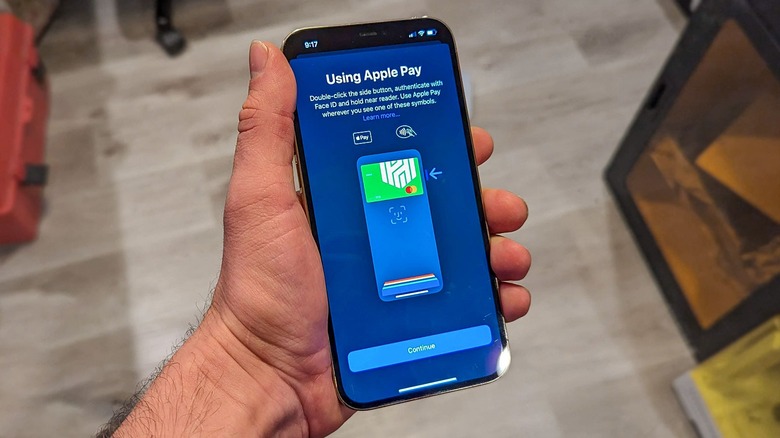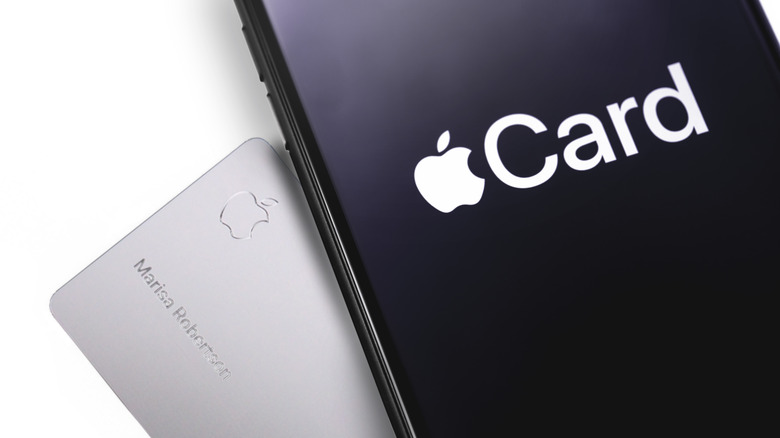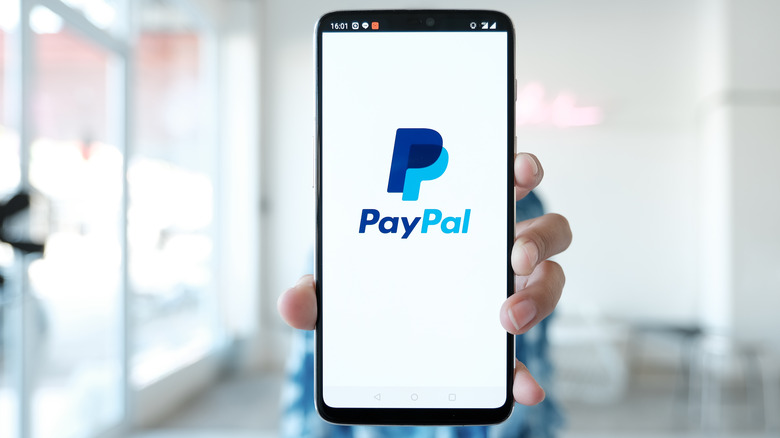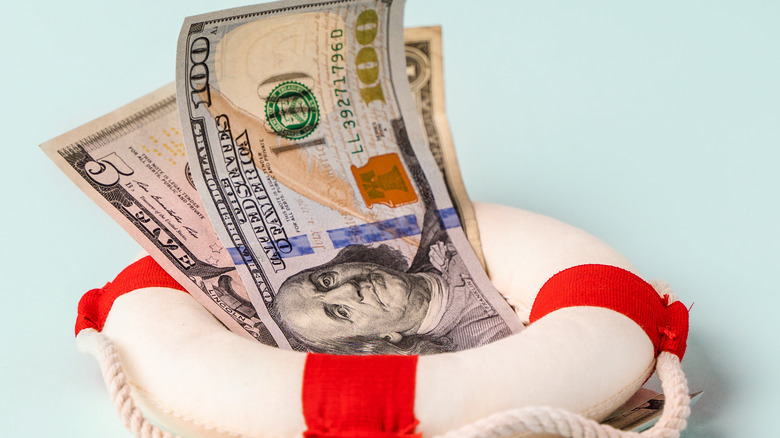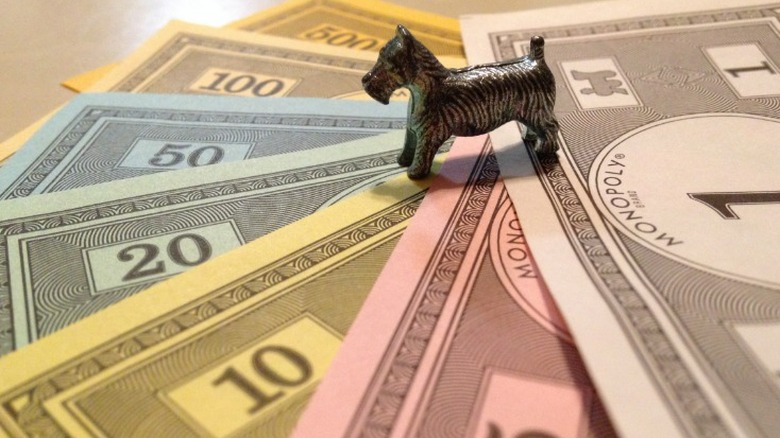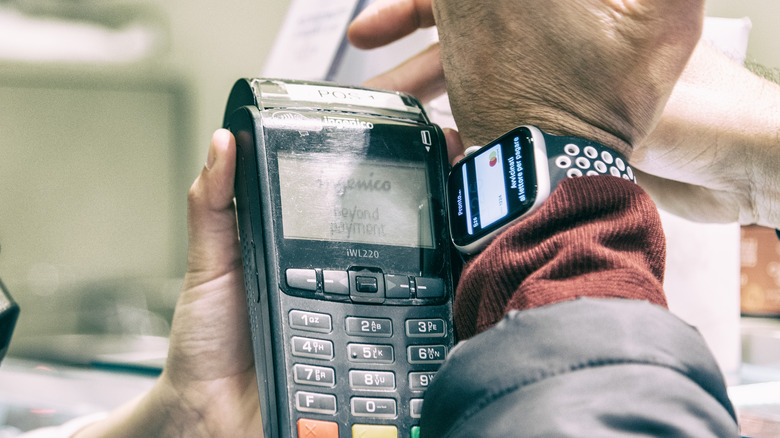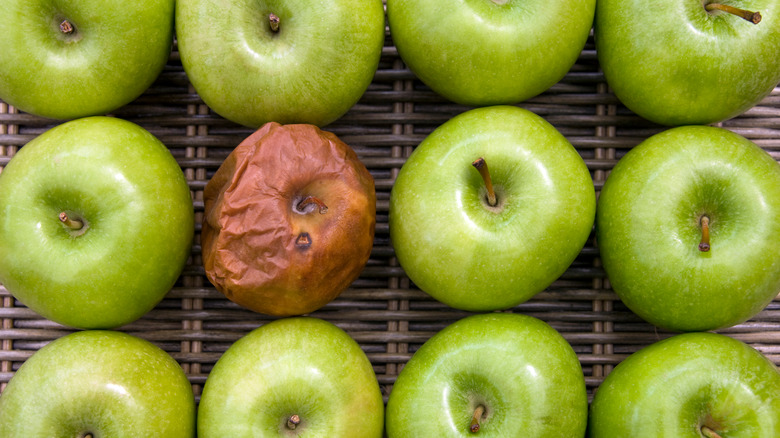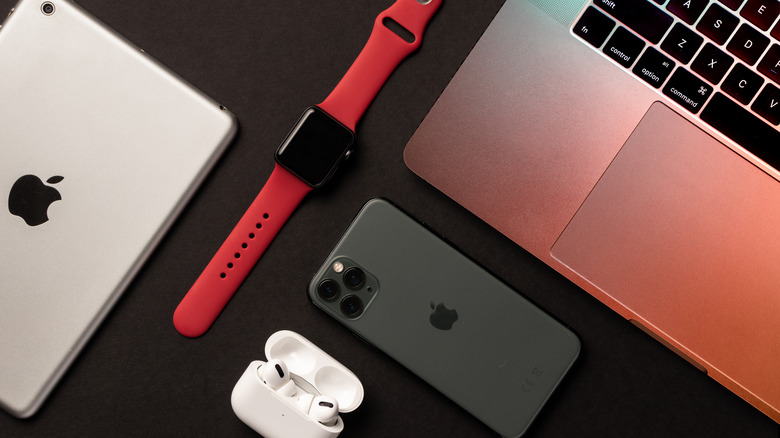Are Mobile Wallets Like Apple Pay Making Bad Financial Decisions Easier?
Apple's success and prevalence in American life come with some downsides, one of which is that anything the company does is examined with a critical (some might say jaundiced) eye by just about everyone, from tech journalists to consumer advocates, privacy warriors, and open source fundamentalists. And so it is with Apple Pay, the company's predictably successful foray into the digital wallet space. What is it about Apple Pay that has the experts worried, and to what extent should we really be concerned?
Strictly speaking, we're looking at more than just Apple Pay here. Apple Pay is a specific offering — basically, a digital wallet enabled on iPhones with near-field communication (NFC) capabilities. But what people tend to react to is Apple's payment ecosystem, which includes a bunch of adjacent and ancillary services. This includes Apple Pay Later: a buy now, pay later service much like the dozen competing services you've encountered recently, and Apple Card: a credit card that's defanged when not completely integrated with Apple Pay itself.
Some aspects of Apple Pay are intuitive enough. It's contactless, presumably a good thing in the post-pandemic, pre-next-pandemic outlook, and apparently saves one from the eternal struggle of having to find a card in your (physical) wallet. Our phones have become so integral to our lives that having to produce them for NFC payments is not an issue, and it doesn't matter that they're probably heavier and more cumbersome in some ways than a traditional wallet. There are no fees associated with these services (though the Apple Card does, of course, have an APR); Apple makes its money via merchant fees.
Apple Cash isn't cash
Payment processor Square says that Apple Pay lets consumers "replace physical cards with cash for an easier, more secure way to transact." This statement is incoherent unless what Square really means isn't physical dollars and cents "cash" but another swirling eddy of the Apple payment ecosystem: Apple Cash.
But one thing Apple Cash isn't is, well, cash. Apple says Apple Cash is "a digital card that lives in Wallet" and allows you to make payments to businesses and individuals without the need for an actual plastic card (but with the need for an iPhone). It's a number that represents a card that represents actual cash. In fact, because Apple Pay tokenizes your card number to keep it safe, Apple Cash is a number that represents a number that, in turn, represents a card. The apparent Orwellian Doublespeak of calling such a thing "cash" has, understandably, set some people on edge.
Consumer advocates are concerned because Apple Cash, a debit card that can only be used with Apple Pay, is how individual users would receive money from (for example) a person-to-person payment. Critics suggest this additional layer appears to put money in Apple's bank accounts without benefiting consumers at all.
Apple Cash isn't all that unusual
Many new-age payment systems work in effectively the same way as Apple Cash — including PayPal (with which Apple Pay recently partnered). Even Intuit's Credit Karma has a similar product called the Spend Account, which is promoted as a landing strip for tax refunds via Intuit's TurboTax service. In other cases, like PayPal and CashApp, funds transferred between individuals are received in an account that functions like a debit card, which can be transferred to a standard bank account. Of course, it isn't cash, but neither is the debit card from your traditional bank.
The distinction between Apple Cash and other payment schemes is that you must use Apple Pay to spend the money tied up in Apple Cash, while other services' cards work with traditional, issuer-agnostic payment processing platforms like Visa and MasterCard.
The view that Apple is doing all this to make use of your money for as long as possible is a common claim and is, of course, probably true to some extent. In an interview with FastCompany, S&P Global analyst Eric Turner said that this isn't likely to be a critical revenue stream, given that competitor PayPal probably only makes about .5 percent of its revenues from investing users' money. So what is Apple up to here?
Apple Pay Later might make you overspend
One obvious motivation is to get users to spend more money, which means that Apple would collect more in merchant fees. In 2020, a Netfluential and Edison Trends PayPal and Venmo Study found that digital wallet use increases unplanned spending by 35 percent. That can obviously have a negative impact on consumers who don't have a lot of room in their budgets for increased spending.
Perhaps the most concrete (and arguably the most legitimate) criticism of the Apple Pay ecosystem involves Apple Pay Later, a buy now, pay later (BNPL) program that lets consumers split the cost of the product up over a six-week period. Personal finance experts and advocates warn that BNPL programs cause consumers to overspend, and there's lots of evidence to support that claim. Part of the problem is that BNPL schemes further abstract your transaction from the more concrete reality of cash. "With cash, we're much more attuned to whether what we're buying is worth what we're paying," certified financial planner Charles Ho told Nerdwallet. "Whereas if we don't have that pain of paying immediately, our value radar gets thrown. We're willing to pay more for something or even buy something we otherwise wouldn't buy."
Apple Pay Later isn't different from any other form of credit, except that it's cheaper, given the zero-interest aspect. And zero interest terms aren't exactly uncommon for traditional credit cards. Easy credit is always problematic for some percentage of buyers, and all the consequences of mounting debt will mount for Apple Pay Later users as well.
How much spending is overspending?
The overspending is easy to see. The average purchase made with Affirm, a competing BNPL program, is $365: well over three times the value of the average U.S. shopping cart. And 38 percent of BNPL users have missed a payment, according to Credit Karma's research. This is a pretty clear sign that the buyers have gotten in over their heads.
Let's see what these numbers mean for the average American. More than 40 percent of Americans have used some form of buy now, pay later service, and Credit Karma also reports that 72 percent of those users who missed a payment saw their credit scores drop. That works out to roughly 15 percent of Americans missing a BNPL payment, and about 11 percent of Americans taking a hit to their credit scores. It's not an encouraging success rate, but it's not exactly surprising either.
Morning Consult concluded a study in January 2022 that found, among other distressing facts, that BNPL users overdrafted their bank accounts at a rate of about 40 percent during the period of the study, and were about twice as likely to overdraft their bank accounts than the general population.
But Pay Later makes some purchases possible
BNPL executives and other advocates argue that, without the ability to buy certain products with low or no fees, consumers with poor credit would be unable to buffer against unexpected needs and hardships... a critical component of cash management. Some consumers will use BNPL irresponsibly, just as they would use any credit irresponsibly, but if BNPL doesn't work for two in five users, it apparently does for the other three. And BNPL users are disproportionately people of color and are likely to be younger, according to Morning Consult, which means both the negative and positive aspects of BNPL will affect those communities more than others.
While 22 percent of respondents to a Debthammer survey say that they regret using BNPL programs, 65 percent say that BNPL made their purchase possible and 27.8 percent say they used BNPL for a necessity they couldn't otherwise afford. In the context of cash management, this is a big deal. Almost half of Americans couldn't afford to pay for a $400 emergency expense in May of 2022, according to YouGov research. What's worse, the average emergency expense is actually about $1,400. With 59 percent of Americans living paycheck-to-paycheck (including 43 percent of those who make $100,000 or more, according to LendingClub), there's reason to value such financial flexibility.
Consumer Reports is critical of BNPL and points users to credit cards instead, citing added consumer protections and the value of financial flexibility. Flexibility, of course, is exactly the role BNPL programs seek to fill. The credit score system in general disadvantages the poor, so BNPL programs that report to credit bureaus are providing a means of boosting credit scores and addressing that inequity. Unfortunately, Apple will handle its own lending, and claims it will not report missed payments to credit bureaus.
Monopoly concerns
In March 2021, three companies combined had almost half a trillion dollars in cash reserves and investments: Microsoft ($130 billion); Google's parent company, Alphabet ($160 billion); and Apple, in the lead by a mile with $204 billion. With apologies to Senator Everett McKinley Dirksen, a billion here, a billion there, and soon you're talking about real money. And, inevitably, you're also talking about a monopoly; all three companies have been accused of monopolistic behavior.
Such dramatic success is unusual, and it makes some people nervous, especially as we ourselves — in the form of data about our behavior and preferences — increasingly become the product. And Apple (with a market cap of almost $2.4 trillion, up from $1 trillion in 2018) has definitely performed in a way that makes big tech naysayers nervous.
Apple paid out over $100 billion to investors in 2021 and ended the year with $60 billion in cash reserves.
Of course, this level of success isn't unheard of, and it's also not permanent. Just ask Sears, who once dominated the retail marketplace with a paper catalog that foretold Amazon's eventual dominance. And now Amazon has been unprofitable for the first year since 2014, which will probably quiet some of the monopoly talks. But the question for today is: how is Apple Pay doing?
Is Apple is abusing its position to prop up Apple Pay?
Monopoly or not, some are concerned that Apple is leveraging its position atop the smartphone marketplace to deeply penetrate our personal and financial lives. Consider this: a recent Juniper Research study showed that half of the world's population will be using mobile wallets by 2024. In 2020, 92 percent of mobile wallet transactions used Apple Pay rather than Samsung and Google offerings, according to the PULSE Network.
So, do the 507 million Apple Pay wallets in use worldwide constitute a monopoly? That would be hard to argue given that PayPal (which owns Venmo) has 432 million active users. That "92 percent of mobile wallet transactions" figure dropped to 88 percent in the 2022 PULSE Debit Issuer Study, and it doesn't include PayPal, which has an NFC-enabled (by way of Discover) mobile app.
Also, it's not entirely clear what any of these numbers actually mean. Consider Google Wallet: you can add payment methods to your Google account (typically through Chrome) and use them on a mobile device for online purchases without even setting up the mobile Wallet app. Along the way, you'll need to agree to Google Pay's terms of service. If anyone can explain how all of these are not essentially a single service, it's not Google.
But all of those mobile transactions using cards stored in your Google account are not considered Wallet transactions, even by Google. If you are inclined to argue that NFC is the distinction, keep in mind that you can use Google Wallet without an NFC-enabled, Tap to Pay-capable phone — which describes a surprising number of Android phones even today. So, however good Apple is at making things easy to use, it's not a foregone conclusion that tightly integrated services are going to be comprehensible to the general public.
When is a monopoly not a monopoly?
If all of this is confusing, consider how confused it can leave a consumer who has no interest in even trying to unpuzzle it.
Remember that Apple Pay/PayPal partnership from November 2022? It surprised some, seeming like an uncharacteristically 2005-ish, Web 2.0 move for Apple. But the companies had actually planned such a partnership back in 2014, which fell apart because of an existing PayPal/Samsung agreement that rubbed Apple the wrong way. Partnering with one competitor but only on the condition that another competitor gets frozen out might seem like anti-competitive behavior, but it also seems like competitive behavior. And the PayPal example is instructive here because you can't really think of Apple as monopolistic when consumers use PayPal for 16 percent of all online purchases, while Apple squeaks by with 5 percent, according to The Motley Fool.
Apple is the target of Affinity, a small Iowa credit union that's attempting to initiate a class action against Apple for monopolistic behavior, based on the fact that Apple systematically excludes competing mobile wallets from its platform. Affinity offers NFC-enabled Affinity Pay via its Affinity FCU Card App. While it's clear from the PayPal deal that Apple is willing to open Apple Pay to competitors with which it has a partnership agreement, the iOS Tap-to-Pay (NFC) functionality is clearly more closed than the equivalent Google Pay/Android version.
However, consider this: in 2021, only 6.1 percent of people use Apple Pay when they have that option, and that number appeared to be pretty stagnant according to PYMNTS data. (According to PULSE, digital wallets are only responsible for 1-2 percent of debit transactions). On top of that, big banks have started an Apple Pay competitor.
Takeaways and approaches
What do we make of all this, ultimately? Clear, unacceptable corporate misdeeds are pretty rare, and in the end, consumers must make choices for themselves based on their values. If lawsuits and antitrust actions fail to dissuade Apple from its course, you must take a look at how you want to interact with big tech and fintech companies, and how you'll deal with the inevitable personal finance manipulation they engender.
In some senses, Apple is being a typical fintech giant acting out of duty to its shareholders and buffering the company against the eventual failure of its hardware product ecosystem... or at least of the ecosystem's popularity. Apple was probably not motivated by altruism to create a wholly-owned subsidiary to handle Pay Later loans.
The U.S. government has mechanisms for addressing antitrust behavior, and it's not entirely clear that Apple is exhibiting antitrust behavior anyway. It's probably meaningful that a Google search for "moderate approach to Apple regulation" turns up more articles about growing apples than about making our relationship work with a huge and hugely popular consumer tech company.
The questions you're asking about Apple's payment system would seem to be the same as those you should be asking of any Apple Pay alternative. Do I understand the risks involved in using this payment system? Can I expect that I'll be afforded the same assurances and protections against the potential negative results of using this system? Do I, as an individual, want to participate in making this organization bigger or more powerful?
